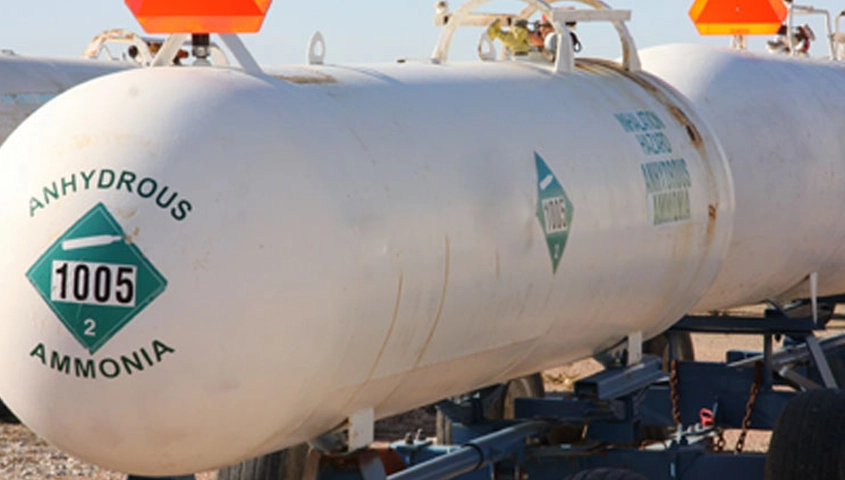Supplier of Ammonia from Turkey and Dubai-UAE

Descriptions of Ammonia
Ammonia (NH₃) is a colorless, pungent-smelling inorganic compound composed of one nitrogen atom and three hydrogen atoms. As one of the most widely produced chemicals globally—exceeding 170 million metric tons annually—it plays a vital role in agriculture, refrigeration, and industrial manufacturing. Its versatility, affordability, and efficiency make ammonia indispensable across industries.
Key Properties of Ammonia
Ammonia’s unique characteristics explain its wide range of applications:
| Property | Specification |
|---|---|
| Molecular Formula | NH₃ |
| Boiling Point | -33.34°C (-28°F) |
| Melting Point | -77.73°C (-108°F) |
| Density | 0.86 kg/m³ at 0°C |
| Solubility | Highly soluble in water, forming ammonium hydroxide (NH₄OH) |
| Odor | Sharp, pungent, easily detectable |
These properties make ammonia ideal for fertilizer production, refrigeration, chemical synthesis, and cleaning solutions.
Types and Grades of Ammonia
Ammonia is available in various grades for industrial and commercial use:
-
Anhydrous Ammonia (NH₃ gas): Used primarily in fertilizers and industrial processes.
-
Aqueous Ammonia (Ammonium Hydroxide): Diluted solutions used in cleaning, chemical manufacturing, and water treatment.
-
Food Grade Ammonia: Used in food processing applications under strict regulatory standards.
-
Reagent Grade: High-purity ammonia for laboratory and research purposes.
Applications of Ammonia
Ammonia’s diverse properties enable it to serve industries ranging from agriculture to manufacturing:
1. Agriculture and Fertilizers
Over 80% of ammonia is used to produce nitrogen-based fertilizers such as urea and ammonium nitrate. These compounds boost soil fertility and crop yields, supporting global food production. Ammonia is often used alongside soda ash in fertilizer formulations for soil pH adjustment.
2. Refrigeration
Ammonia (R-717) is a widely used eco-friendly refrigerant. It offers zero ozone-depletion potential and high energy efficiency in industrial cooling systems, including cold storage, food processing, and ice rinks.
3. Water Treatment
Ammonia is essential for water treatment processes. Combined with chlorine, it forms chloramines, providing longer-lasting disinfection while minimizing harmful byproducts. Many municipal water treatment plants also use ammonia with soda ash to balance pH and remove impurities effectively.
4. Cleaning Solutions
Due to its alkaline nature, ammonia dissolves grease and stains, making it a key ingredient in household and industrial cleaners. Diluted aqueous ammonia is widely used for floor, glass, and surface cleaning.
5. Textile and Leather Manufacturing
Ammonia fixes dyes in textiles to achieve vibrant, durable colors. In leather processing, it enhances softness and flexibility during tanning.
6. Industrial Chemical Synthesis
Ammonia serves as a feedstock in the production of nitric acid, ammonium salts, and various nitrogen-based chemicals. It is also used in chemical manufacturing alongside soda ash in water purification and pH regulation processes.
7. Pharmaceuticals and Healthcare
Used in controlled processes to produce certain drugs, disinfectants, and sterilization solutions.
8. Mining and Metallurgy
Ammonia is applied in gold and silver leaching, cyanide destruction, and rare-earth metal extraction.
Ammonia Packaging & Storage
Proper packaging is crucial due to ammonia’s corrosive and toxic nature:
-
Steel Cylinders: Small-scale laboratory or commercial use.
-
ISO Tanks: Safe transport of bulk quantities.
-
Industrial Storage Tanks: Large-scale operations with continuous supply.
Container loading must follow safety regulations to prevent leaks and exposure.
Safety Guidelines
To minimize risks while handling ammonia:
-
Personal Protective Equipment (PPE): Gloves, goggles, respirators.
-
Ventilation: Prevent vapor accumulation in workspaces.
-
Emergency Response: Rinse exposed skin/eyes immediately with water and seek medical attention.
-
Storage: Keep away from heat, direct sunlight, acids, and other incompatible substances.
Refer to OSHA and EPA guidelines for detailed safety procedures.
Environmental Impact
Ammonia is essential but must be managed responsibly:
-
Eutrophication: Excessive agricultural runoff can cause algal blooms, harming aquatic life.
-
Air Pollution: NH₃ emissions contribute to particulate matter formation.
Green ammonia production using renewable energy is being adopted to reduce carbon emissions and environmental harm.

